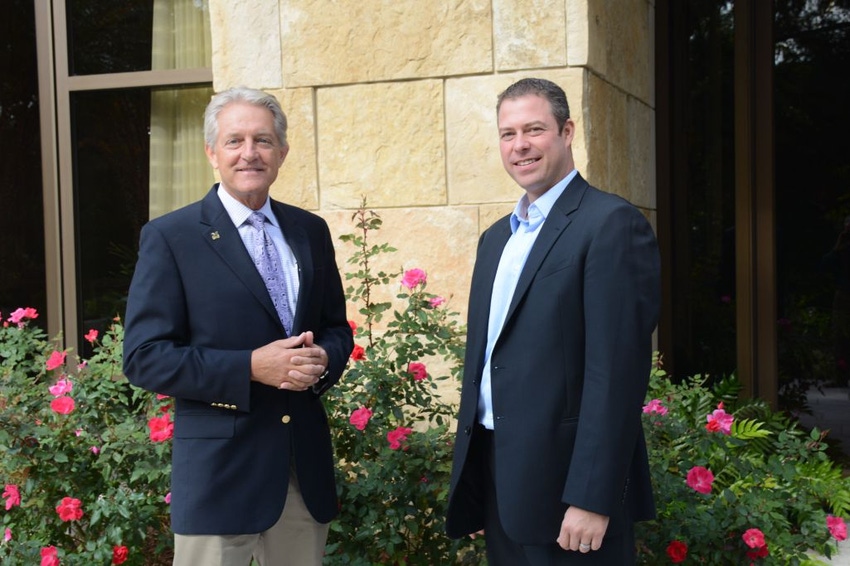
Timothy Pastoor is confident atrazine will continue to be available to farmers.
Pastoor is a retired toxicologist with Syngenta who has a long history of working with the compound throughout his career up until his retirement as principal scientist in 2015. While at Syngenta, Pastoor was actively involved in numerous registration processes for atrazine by the Environmental Protection Agency.
In 2018, atrazine is up for re-registration by EPA.
“We anticipate that atrazine is going to go through its pre-registration review, come out the other end available for farmers and growers in the way it’s been for the past 50 years plus,” Pastoor said at a Syngenta summit for farm journalists in Cary, N.C. Oct. 27.
Atrazine is up for EPA re-registration every 15 years and the last review on ecological effects was in 2003 so the next review is in 2018. Pastoor said the science clearly supports re-registration. But he stressed that farmers and the industry must remain proactive in supporting the continued use of atrazine.
Still, atrazine faces regulatory hurdles. In June, EPA issued a draft report on the ecological assessment of atrazine that was roundly criticized by Syngenta and others in the industry for containing numerous data and methodological errors that need to be corrected.
Pastoor said it is his view that EPA looked at the universe of data, put it all together, but didn’t get it quite right.
“But they will,” he stressed. “In 2017, they are going to have a scientific advisory panel meeting to look at the details. EPA will consider what that group of academic scientists advises them to do. They will go back with their scientists and they will revise that draft risk assessment. They will go back and fix the problems.”
Pastoor said there are numerous factual errors in the draft report that need to be corrected. For example, he noted EPA mislabeled milligram when it should have been labeled microgram or mislabeled microgram when it should have been labeled milligram. In addition, he said EPA relied on flawed studies when it made its draft assessment.
EPA could have used a huge database monitoring the safe use of atrazine in the Midwest, but Pastoor said the agency did not do that. In many cases, they used a model rather than an actual database to predict what might be in the environment as far as atrazine is concerned.
“EPA is well aware of how everybody feels about this draft assessment. There is no secret there. We will rely on this to point out the errors in this assessment. The revisions will be based on the best available science. I can assure you that,” Pastoor told the farm journalists.
“EPA has a track record of being very open and transparent in accepting those kinds of comments and putting them into revising that draft assessment. We have confidence in that because we have seen it before. Atrazine has gone through 13 scientific advisory panels already. There will be another one next year and perhaps others in the future. In that transparent process, we expect to get these things right.”
Pastoor said science is clearly on atrazine’s side.
“In over 50 years, we have produced more data on this product than virtually any other molecule on the planet. I have said this many times and I sincerely mean it: this is one of the best studied molecules ever and we can prove that with a lot of the information that is out there.”
Atrazine is one of the most closely examined pesticides in the world and its safety has been established in more than 7,000 scientific studies over more than 50 years. “To put that in context, you might want 100 to 200 studies supporting an active ingredient. We’re talking about 7,000 studies that support the registration of atrazine,” Pastoor explained.
To understand the benefits of reregistering atrazine, Pastoor said it is important to understand the difference between the words “complex” and “complicated.” The database information on atrazine is complex but not complicated, he said.
“It’s pretty straightforward,” Pastoor stressed. “There are a huge number of very high quality studies to base your decisions on and good data to give you good regulatory decisions. That’s the foundation of good regulation. Good science, good regulation. It’s not complicated, it’s just complex.”
Pastoor said atrazine delivers clear benefits to farmers which is why it has been on the market for more than 50 years. “I often refer to atrazine as the aspirin of agriculture because it is inexpensive and it works. That��’s why farmers see a tremendous amount of value in it.”
About the Author(s)
You May Also Like






